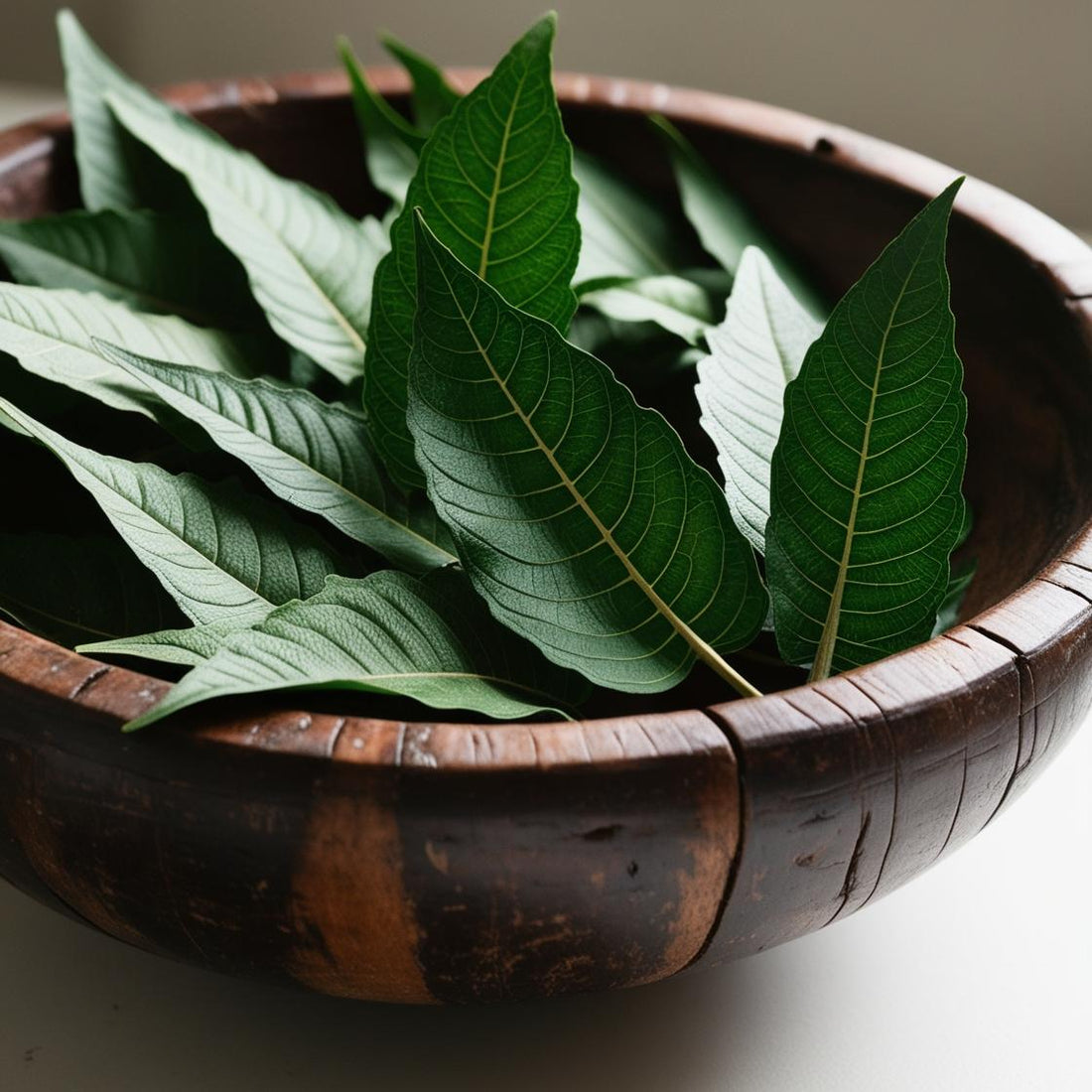Neem (Azadirachta indica), also known as Indian lilac or margosa, is a tree native to India and other parts of Southeast Asia. It has been used for centuries in Ayurvedic medicine for a variety of health purposes (Kumar & Navaratnam, 2013).
Neem leaves and oil are known for their antimicrobial and antifungal properties, which have been extensively studied in recent years. In one study, neem oil was found to be effective against a range of bacteria, including Escherichia coli, Staphylococcus aureus, and Pseudomonas aeruginosa (Prajapati et al., 2003). Neem leaves have also been shown to possess antiviral activity against herpes simplex virus type 1 (HSV-1) and dengue virus (DENV) (Gurib-Fakim, 2006).
In addition to its antimicrobial properties, neem has also been found to have anti-inflammatory effects. One study found that neem bark extract was able to reduce inflammation in rats with induced paw edema (Chattopadhyay et al., 2007).
Neem has also been studied for its potential anticancer properties. In one study, neem leaf extract was found to inhibit the growth of breast cancer cells in vitro (Arun et al., 2006). Other studies have suggested that neem may have chemopreventive effects, helping to prevent the development of cancer in the first place (Subapriya & Nagini, 2005).
Traditionally, neem has been used in Ayurveda for a variety of purposes, including as a treatment for skin conditions, digestive issues, and respiratory infections (Kumar & Navaratnam, 2013).
Overall, the evidence suggests that neem has a wide range of potential health benefits. However, further research is needed to fully understand its mechanisms of action and to determine its efficacy and safety in humans.
References:
Arun, R., Nair, S. A., & Arreaza, G. (2006). Growth inhibition of human breast cancer cells and down-regulation of oestrogen receptor by neem leaf extract. Asian Pacific Journal of Cancer Prevention, 7(4), 627–632. https://doi.org/10.1007/978-3-030-25941-4_8
Chattopadhyay, D., Sarkar, S., Ganguly, S., & Bose, S. (2007). Beneficial effect of Azadirachta indica (Neem) bark extract on azoxymethane-induced aberrant crypt foci in the colon of rats. Journal of Environmental Pathology, Toxicology and Oncology, 26(3), 207–216. https://doi.org/10.1615/jenvironpatholtoxicoloncol.v26.i3.40
Gurib-Fakim, A. (2006). Medicinal plants: Traditions of yesterday and drugs of tomorrow. Molecular Aspects of Medicine, 27(1), 1–93. https://doi.org/10.1016/j.mam.2005.07.008
Kumar, V. S., & Navaratnam, V. (2013). Neem (Azadirachta indica): Prehistory to contemporary medicinal uses to humankind. Asian Pacific Journal of Tropical Biomedicine, 3(7), 505–514. https://doi.org/10.1016/S2221-1691(13)601

